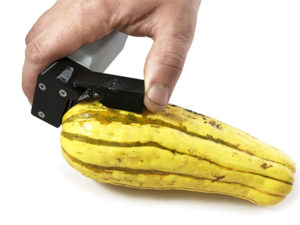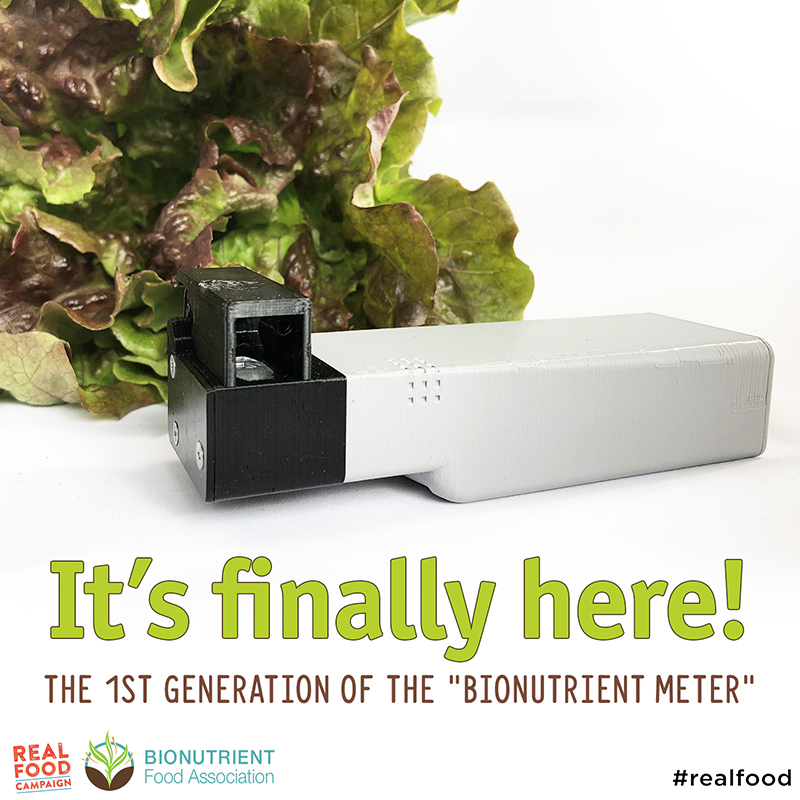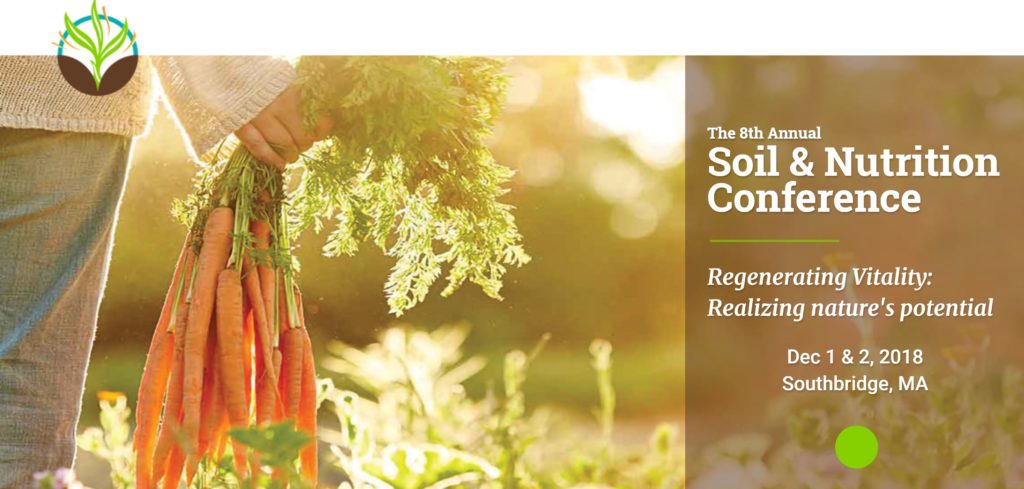Unveiling the First Generation Bionutrient Meter
We previously reported on the exciting prospects of the Bionutrient Meter, a hand-held device that measures the nutrient content of foods. Now, the Bionutrient Meter is a reality and is available for purchase. The Bionutrient Food Association are right now building the first 300 for early adopters, and they will make about 50 available at the upcoming Soil & Nutrition Conference November 30 – December 2, 2018 in Southbridge, MA. The device will be unveiled at the pre-conference on November 30, where it will likely sell out.
 Early adopters of the Bionutrient Meter are invited to take part in their citizen science project, providing data to help improve future versions and continue the mission of the Bionutrient Food Association. Learn more about how you can get involved, and different ways you can use this tool to collaborate as a grower, consumer, activist, researcher or company.
Early adopters of the Bionutrient Meter are invited to take part in their citizen science project, providing data to help improve future versions and continue the mission of the Bionutrient Food Association. Learn more about how you can get involved, and different ways you can use this tool to collaborate as a grower, consumer, activist, researcher or company.
The Bionutrient Food Association introduces the Bionutrient Meter with the following paragraphs from their website:
The Bionutrient Food Association has been working to improve food quality since its inception in 2010, and one of the key ways we identified to do that, was to align economic leverage and supply chain transparency. It is said, people vote with their dollars. Markets are driven by demand. We believe there is a growing awareness that not all food is equal, and quality – of nutrient levels, taste, and shelf life – can vary greatly. Short of tasting before buying, the cues we shoppers have for determining the quality of our food are unreliable at best. And industrial agriculture has worked hard over many decades to develop and promote varieties that emphasize visual appeal and transportability at the expense of quality and taste.
Now imagine going to the farmers market, flashing a light at several different carrots or a head of lettuce, and comparing their nutritional values in real-time. Readings would likely show variations in quality – some are nutrient dense, while others are not. Which ones would you purchase? Given the option, wouldn’t you start basing your buying decisions on how good it was for you and your family?
Our guess is yes. If the consumer is empowered at point-of-purchase to see what it is they are buying, producers will no longer be able to skate by with visually appealing, but poorly grown and nutrient deficient product. We believe this real-time accountability in the marketplace has the potential to dramatically impact the food system, our farms, our health, and our ecosystem.
Support us on Patreon
Thank you for joining us today! Please become a member of RTE and support us on Patreon. Unlike many larger organizations, we work with a team of determined and passionate volunteers to get our message out. We aim to continue to increase the awareness of remineralization to initiate projects across the globe that remineralize soils, grow nutrient dense food, regenerate our forests’ and stabilize the climate – with your help! If you can, please support us on a monthly basis from just $2, rest assured that you are making a big impact every single month in support of our mission. Thank you!









Niels van Heeren
December 24, 2018 (4:44 pm)
Interesting development. Does this meter work like a brix meter, refracting light, or NIR type of technology? We are very interested in such a device for our work with growers that we buy produce from. We are a large importer of tropical fruits and exotics in the Netherlands.
David R(Canada)
March 14, 2019 (3:30 pm)
If this little tool takes off and enough retail customers have them, I can see the retailers, and eventually the wholesale-distributers using them.
When the producer starts getting a different price for their produce, depending upon the quality, we may finally see a mad scramble towards improving the soils.
……………………………………..
Combine this with a hand-held device to measure levels of pesticides and the world will change very quickly.
Stephen Claydon
March 14, 2019 (3:41 pm)
I am very interested in this meter, but really, the promo material says nothing about how it works so I have to ask. The world is awash with promotions, advertising, and pseudo-scientific claims for every manner of device, so I would think in promoting this there would be something more substantial than the usual, non-specific, no peer review, unsubstantiated claims to greatness and utility. If it works, GREAT! But how does it work? What is being measured? What standards is is comparing something to?
I look forward to hearing…….
Joanna Campe
March 17, 2019 (2:49 pm)
For more information about the Bionutrient Meter, please go to the Bionutrient Food Association website here: http://bionutrient.org/site/bionutrient-meter. They have details about how it works. You can also contact them if you have more questions.
Ed Moerman
March 15, 2019 (7:25 am)
Is it already commercially available? Can you provide any scientific backup?
Joanna Campe
March 17, 2019 (2:52 pm)
You can order the Bionutrient Meter from the Bionutrient Food Association here: https://bionutrient.org/site/membership/tools. They also have information about how it works, and you can contact them for more information about scientific data.